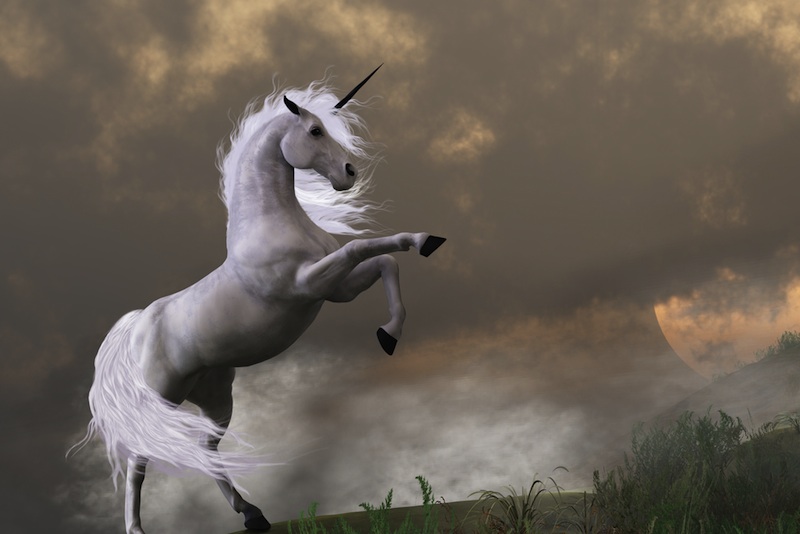The Real Story of North Korea's Unicorn Lair

North Korean state media has reported the discovery of the lair of a unicorn ridden by an ancient Korean king. But that doesn't mean the entire country is living in a fantasy world.
In fact, the report is a propaganda piece likely geared at shoring up the rule of Kim Jong Eun, North Korea's young and relatively new leader, said Sung-Yoon Lee, a professor of Korean studies at the Fletcher School of Law and Diplomacy at Tufts University. Most likely, North Koreans don't take the report literally, Lee told LiveScience.
"It's more symbolic," Lee said, adding, "My take is North Koreans don't believe all of that, but they bring certain symbolic value to celebrating your own identify, maybe even notions of cultural exceptionalism and superiority. It boosts morale."
North Korea is currently forging ahead with a long-range rocket launch test that the United States and other international powers call a provocative act.
Legitimizing myths
According to an English language article from North Korea's state news agency, archeologists have "reconfirmed" that a lair in Pyongyang is that of a unicorn ridden by Tongmyong, who founded the real-life Koguryo Kingdom. This ancient Korean kingdom spanned the north and central Korean peninsula as well as northeast China and parts of southern Russia. It was founded sometime between the second century B.C. and the turn of the millennium.
The unicorn lair announcement comes nearly a year after the death of Kim Jong Il, who ruled North Korea from 1994 until his death on Dec. 17, 2011. Kim Jong Il was succeeded by his son, Kim Jong Eun, who is in his late 20s and lacks leadership experience, Lee said.
Sign up for the Live Science daily newsletter now
Get the world’s most fascinating discoveries delivered straight to your inbox.
Tying Kim Jong Eun's reign into that of the first king of the Koguryo Kingdom lends him the legitimacy he lacks, Lee said. The North Korean government has followed a similar strategy before, claiming, for example, that a burial site near Pyongyang is that of Dangun, the founder of the first Korean kingdom and the son of a god and a bear-turned-woman, according to the Korean creation myth. [Top 10 Creation Myths Explained]
There is an Asian creature known as a unicorn, though it has two horns, not one. The saola looks a bit like an antelope but is rarely sighted.
A changing North Korea?
The unicorn lair find was confirmed by a carving in a rock dating back to the Koryo Kingdom between A.D. 918 and A.D. 1392, according to the report. The find is said to confirm not the existence of real, live unicorns, but that Pyongyang is the ancient capital of Korea. That's an important claim on the divided Korean peninsula, Lee said. Neither North Korea nor South Korea recognizes the other's government, so historical claims about where Korea began are used to shore up claims about which is the "true" Korea.
North Korea propagandists have also made supernatural claims about the Kim family, saying, for example, that a snowstorm stopped in its tracks and the sky glowed red above a sacred mountain when Kim Jong Il died.
These sort of outlandish myths are becoming less common, Lee said. The government does "say absurd things" like that Kim Jong Eun is a genius in science, technology and military strategy, and that he speaks six languages, he said, but officials have avoided ascribing magical properties to the young leader.
"It seems that North Korea is now a bit more shy, more responsible in adhering to the facts, because maybe they realize that there is much more information available within North Korea and also information about North Korea that is accessible to outsiders," Lee said.
Follow Stephanie Pappas on Twitter @sipappas or LiveScience @livescience. We're also on Facebook & Google+.

Stephanie Pappas is a contributing writer for Live Science, covering topics ranging from geoscience to archaeology to the human brain and behavior. She was previously a senior writer for Live Science but is now a freelancer based in Denver, Colorado, and regularly contributes to Scientific American and The Monitor, the monthly magazine of the American Psychological Association. Stephanie received a bachelor's degree in psychology from the University of South Carolina and a graduate certificate in science communication from the University of California, Santa Cruz.









